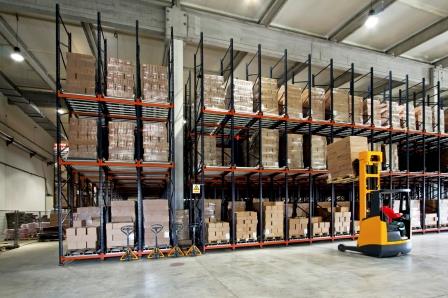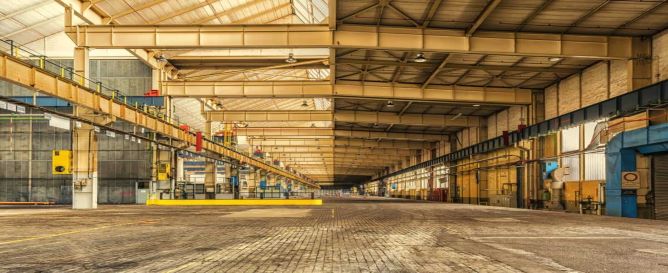The Importance of Warehouse Temperature and Humidity Monitoring with Wireless Sensors

Storing Covid-19 Vaccines, and The Importance of Temperature Monitoring
January 4, 2021
CAP Temperature Monitoring System Guidelines
June 21, 2021There are times when companies overlook the significance of proper climate control in their warehouses, a folly that can result in unmitigated disaster as stocks get ruined. If you want to learn about the importance of warehouse temperature and humidity monitoring, you have come to the right place. Read on as we tackle these topics and delve into how the use of wireless sensors is a viable solution.
What Damage Could Improper Temperature and Humidity Cause?
When a warehouse’ humidity exceeds normal levels, this can have dire consequences not just on the goods that are stored inside but also on the area itself. Mildew and mold could grow on the products and the boxes as well as the shelves and the walls. Also, condensation can cause metal parts to rust and corrode.
Humidity levels fluctuate all through the day. In the daytime, humidity levels can hover around 30% but at nighttime, this often spikes up to around 70 to 80%. This means that round-the-clock monitoring is especially important as high temperatures can lead to products—especially those that are sensitive to environmental conditions—like food and pharmaceuticals getting spoiled.
However, one of the most critical consequences of improper temperature and humidity in your warehouse is the mold growth. Mold is a kind of fungi that lives off of decaying biological matter. They are also responsible for the recycling of dead plant and animal matter. While some can be eaten—mushrooms for example—and others are used in baking bread and brewing beer, some mold can be very dangerous to your health. Inhalation and constant exposure to mold spores in enclosed spaces or areas that do not have proper ventilation can result in serious respiratory illnesses.
Mold grows through the release of the spores, which are microscopic and virtually impossible to eradicate. These spores travel through the air and then, settle on a surface and start to grow. For spores to thrive, they should have enough food to sustain the fungus. However, it is easy for them to find sustenance as any organic substance will do, which in the case of your warehouse, are your packing materials like cardboard boxes, wooden crates and other organic elements that are stored there.
Also, the two most critical environmental conditions that mold needs to grow are temperature and humidity. While moisture is needed, it doesn’t necessarily mean that the surface has to be moist as there is typically enough moisture in the air from the high humidity levels to support mold growth. Most times, humidity levels reaching more than 70% can successfully sustain large mold outbreaks. With this in mind, you must be able to control humidity levels so that you can keep mold from growing in your warehouse. By keeping a close eye on humidity levels, you can instantly make adjustments to prevent mold from growing inside.
You also need to know that mold prefers warmer temperatures, and they are loath to cold climates. This means that you won’t find mold growing in freezers, refrigerators and cold storage. Proper regulation of temperature then, would go a long way in battling mold growth. And so, when the quality of the products in your storage relies on proper climate control, you must have a temperature and humidity monitoring system in your warehouse.
What are the Different Types of Warehouse Storage?
If you want to ensure the quality and purity of the products you’re storing in your warehouse, it is of utmost importance that you have a warehouse environmental monitoring system installed. There are different kinds of warehouse storage types such as:
These warehousing conditions can be implemented in a variety of ways. Temperature-controlled storage systems use heating or cooling systems that maintain the temperature that the products stored inside need. Meanwhile, climate control storage typically uses dehumidifiers or humidifiers as these not only regulate the temperature but also the humidity. Warehouses that use either temperature- or climate-controlled storage systems go through an annual audit that lets the system be adjusted to keep the mandatory environmental conditions.
While the systems discussed above are reactive measures, a proactive measure would be a permanent monitoring system that includes data logging, reporting and most importantly, instant alerts. Real-time monitoring and alerts are crucial especially when the temperature or humidity inside your warehouse go outside of the prescribed parameters. Having this kind of measure can potentially save you thousands of dollars of lost stock.

What is the Most Effective Way to Supervise Humidity and Temperature?
A warehouse temperature monitoring system is utilized to make sure that the suitable temperature, humidity, and other factors are constantly within the required thresholds to sustain the good condition of stored items. This system keeps businesses from incurring unnecessary expenses cost by damage to goods and property by deviations from recommended storage conditions.
Temperature-controlled warehouses and storage complexes are important to logistics and supply chain businesses. A professional, round-the-clock, temperature-monitoring system can be of great help to warehouse managers who can now pay more attention and allot more resources to the day-to-day operation of warehouses.
If you need a cost-effective solution that is easy to install and does not need constant maintenance, and yet, will provide you with effective temperature and humidity monitoring, then, a wireless monitoring system is right for you. It’s a reliable method of tracking temperature and humidity inside your warehouses without raising costs or jeopardizing your stored goods. It is usually comprised of a base station and wireless sensors that can monitor the parameters. The devices are easy to install and energy-efficient. These can go as long as 10 years without ever needing a battery replacement.
And so, if you feel the need for reliable, automated 24/7 temperature and humidity level monitoring and timely alerts for appropriate and immediate corrective actions, you should immediately get a wireless warehouse monitoring system.
What Sets TempGenius apart from other Monitoring Systems
A Proven Track Record and Vast Experience
You do not need any random provider for your monitoring; you need a company that works solely on temperature monitoring solutions. It also needs to have a variety of customers and unmatched knowledge. TempGenius has been working on temperature measurement and recording solutions for many years. We take pride in our plethora of partnerships with renowned medical and healthcare entities in the US.
Compliance with the Set Standards
TempGenius temperature monitoring systems are designed and developed to the highest standards. They have met requirements from the CDC, FDA, CAP, ISO 17025, CLIA, Joint Commission (JC), HACCP, and USDA. Furthermore, we provide enterprise temperature alarms and complete temperature logs when Critical Compliance (CCP’s) are out of compliance.
We Provide Certified Calibration Services
With a vast array of software apps and products, we deliver top-notch calibration services that can support validation, traceability, compliance, and quality assurance. Our systems will help you record and monitor deviations and inaccuracies in detail and provide precise results.
Durable and Reliable Systems
Our temperature monitoring platforms are a culmination of robust expertise, cutting-edge technology, and unparalleled experience. Our ultra-stable platforms are created to give you the best performance and durability.
Contact us to customize a Temperature Monitoring Solution for your enterprise.
Give us a call or email us and let's discuss the most appropriate temperature monitoring sensor for your company.

